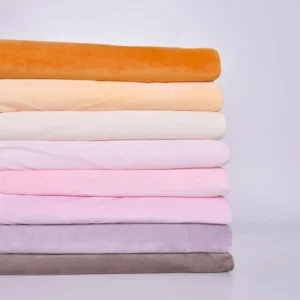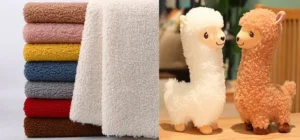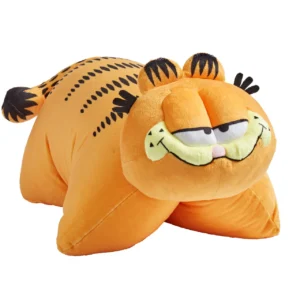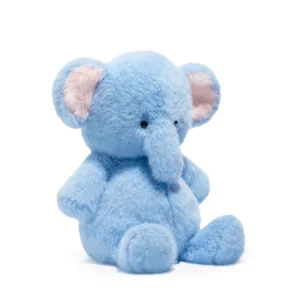When it comes to plush toys, softness is king. The fabric you choose not only defines how cuddly a toy feels but also influences its durability and market appeal.
Softness depends on fiber type, pile length, fabric density, and finishing processes. Fabrics like minky, velvet, and microfiber lead the industry for their luxurious feel and performance in stuffed animals.
Let’s explore the ultimate guide to the softest plush fabrics and what makes them stand out.
1.What criteria determine the softness of plush fabrics?
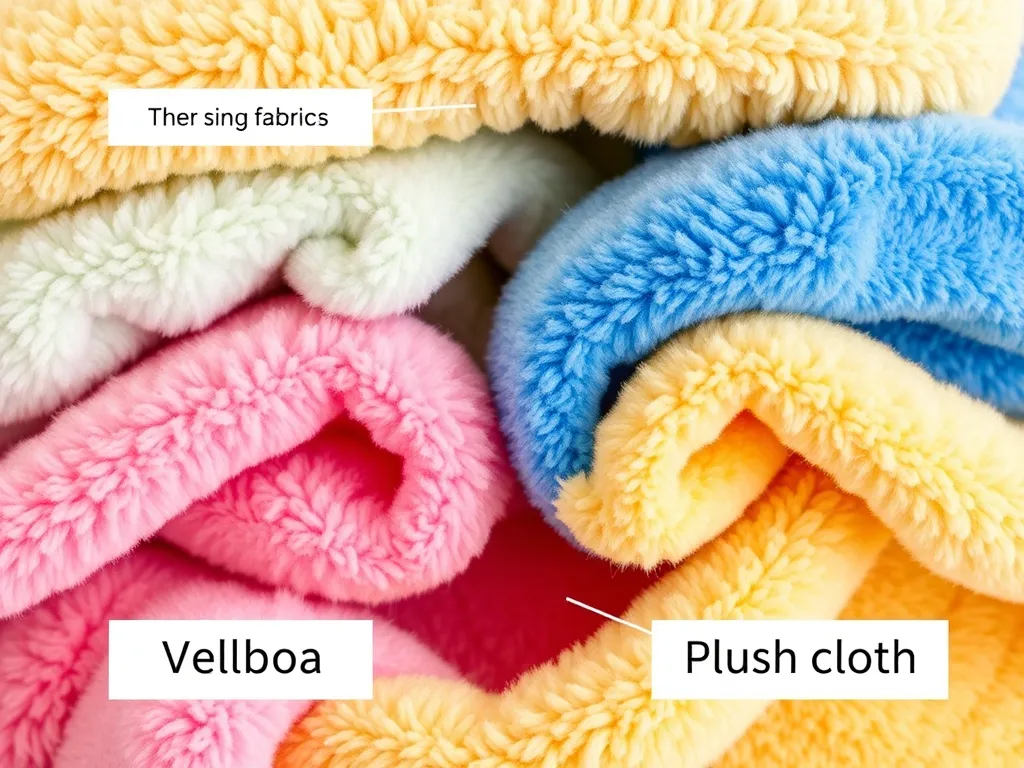
Softness in plush fabrics results from several critical factors: the fiber type used, the length of those fibers, pile density, the weave or knit structure, and the finishing techniques applied after weaving.
Each of these elements plays a role in producing the fabric’s tactile qualities, ensuring the final plush toy is both comfortable and durable.
- Fiber Type: Polyester is the most common fiber for plush fabrics due to its softness and strength. Natural fibers like cotton offer softness but are less durable.
- Fiber Length: Longer fibers create a fluffier, softer fabric because they have fewer ends that can poke out, resulting in a smoother surface.
- Pile Density: The number of fibers packed into the fabric’s surface affects plushness—the higher the density, the softer the feel.
- Weave or Knit: Tight weave or knit patterns hold the fibers upright, enhancing softness.
- Finishing Techniques: Processes like brushing and sanding lift and soften the pile to create a velvety surface.
| Softness Criteria | Description | Impact on Fabric |
|---|---|---|
| Fiber Type | Synthetic vs natural | Softness and durability |
| Fiber Length | Short vs long | Plushness and smoothness |
| Pile Density | Number of fibers per area | Plush feel |
| Weave/ Knit | Tightness and structure | Pile stability |
| Finishing | Brushing, sanding, heat setting | Surface softness |
Understanding these criteria allows manufacturers to select or engineer the perfect plush fabric.
2.Which plush fabric types are considered the softest in the industry?

Among various plush fabrics, several stand out for their superior softness: minky, velvet, microfiber, and velboa.
Minky is famous for its silky texture and is favored in baby products, microfiber offers a suede-like softness, velvet provides a luxurious shine and feel, while velboa balances softness and durability for everyday toys.
- Minky: Ultra-soft polyester fabric with a dense pile and smooth feel, often used for infant and premium plush toys.
- Microfiber: Very fine synthetic fibers create a smooth, soft texture, perfect for high-end plush toys.
- Velvet: A classic plush fabric with a smooth, reflective surface that feels luxurious to the touch.
- Velboa: Short-pile fabric with a soft feel and high durability, ideal for mass-produced stuffed animals.
| Fabric Type | Softness Level | Typical Applications | Price Range |
|---|---|---|---|
| Minky | Very High | Baby toys, luxury plush | Medium to High |
| Microfiber | High | Premium plush toys | Medium to High |
| Velvet | High | Collectibles, decorative | High |
| Velboa | Moderate | Durable kids’ toys | Low to Medium |
Selecting from these fabrics depends on the balance between softness, durability, and cost requirements.
3.How do material composition and fiber length influence plush fabric softness?
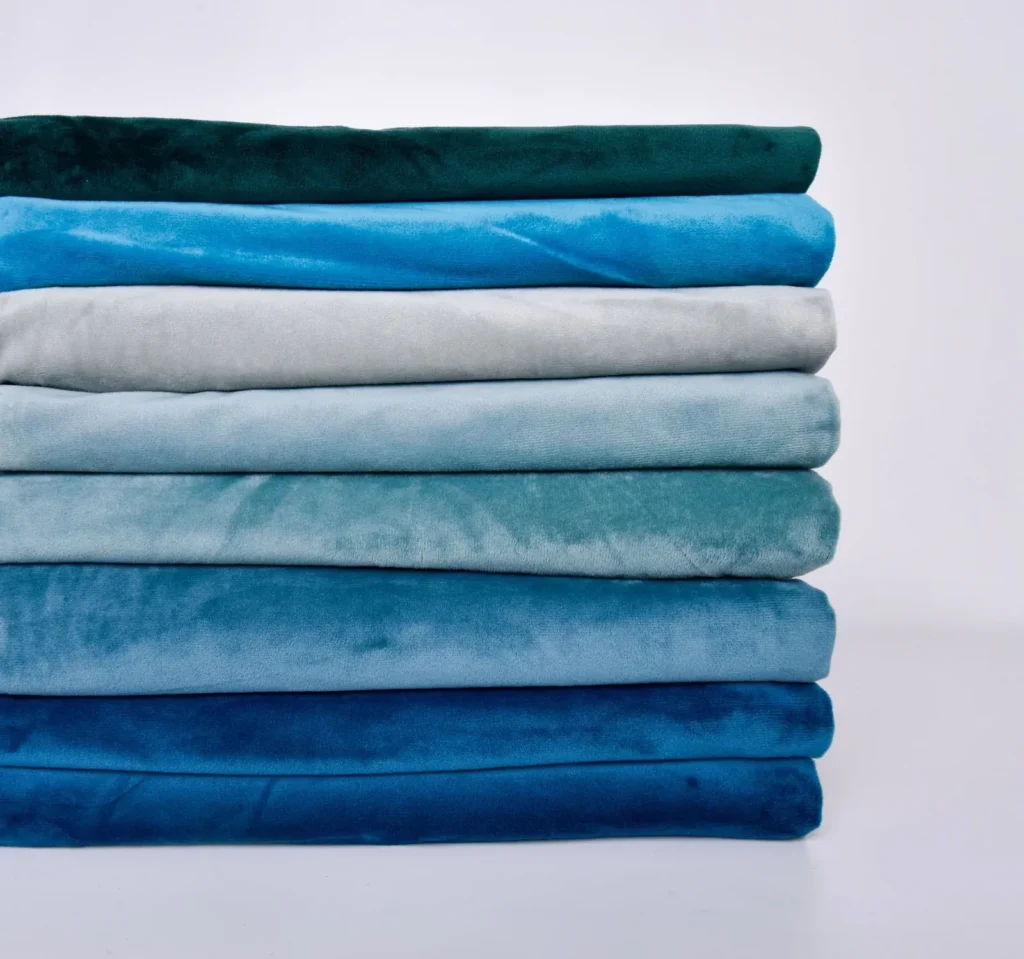
The composition and fiber length are fundamental to fabric softness. Polyester fibers are favored for their balance of softness, durability, and easy maintenance. Longer fibers contribute to a plush, fluffy surface that feels smooth to the touch.
Short fibers tend to create a rougher texture, while longer fibers intertwine to form a velvety feel that is highly desirable in plush toys.
- Polyester: Most common for plush due to resilience and softness.
- Cotton or blends: Add natural softness but lower durability.
- Fiber Length: Extra-long staple fibers create premium plush softness.
| Fiber Composition | Fiber Length | Softness Outcome |
|---|---|---|
| 100% Polyester | Standard | Soft, durable |
| 100% Polyester | Extra-long | Ultra-soft, fluffy |
| Polyester/Cotton | Medium | Soft but less durable |
| Natural fibers | Varies | Soft and breathable, fragile |
Optimizing fiber content and length achieves the desired tactile effect.
4.What manufacturing techniques enhance the softness of plush fabrics?
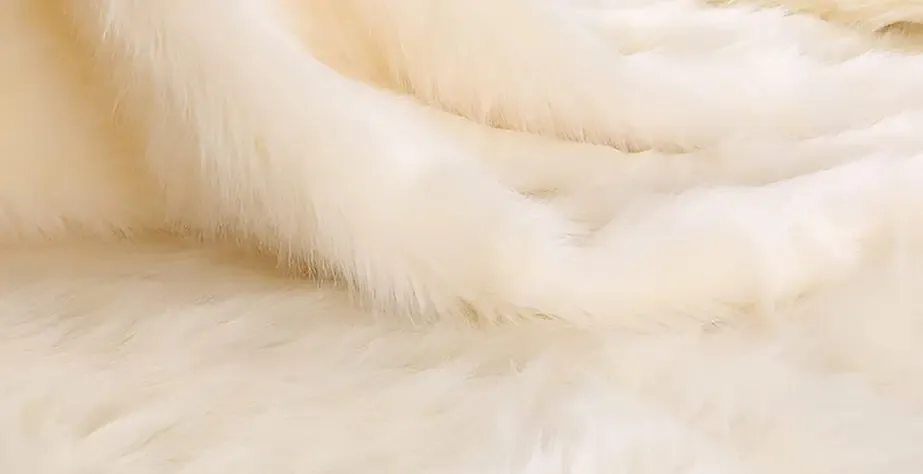
Softness is further enhanced by manufacturing processes like brushing, sanding, shearing, and heat setting. Brushing raises the pile, sanding smooths the surface, shearing trims the pile to uniform lengths, and heat setting stabilizes the fabric’s texture.
These finishing touches ensure plush fabrics stay soft and maintain their luxurious feel even after repeated use and washing.
- Brushing: Lifts fibers, increasing plushness.
- Sanding: Produces a smoother, silkier surface.
- Shearing: Ensures consistent pile height for uniform softness.
- Heat Setting: Locks fabric structure for durability and softness retention.
| Technique | Purpose | Result |
|---|---|---|
| Brushing | Raise pile fibers | Increased plushness |
| Sanding | Smooth surface | Soft, velvety texture |
| Shearing | Trim pile length | Uniform softness |
| Heat Setting | Stabilize fabric form | Maintains softness over time |
Attention to finishing elevates fabric quality significantly.
5.How do softness and durability balance in selecting plush fabrics for toys?

While softness is vital, plush fabrics must also be durable. Longer piles may feel softer but can mat and wear faster. Denser fabrics provide better longevity but may sacrifice some softness.
A balance between softness and durability ensures toys remain appealing and last through playtime, washing, and handling.
- Pile Length: Shorter for durability; longer for softness.
- Fabric Density: Denser fabrics resist wear and maintain texture.
- Fiber Strength: High-quality fibers reduce pilling and shedding.
| Aspect | Effect on Softness | Effect on Durability |
|---|---|---|
| Longer Pile | Increases softness | Decreases durability |
| Higher Density | Moderate softness | Increases durability |
| Fiber Quality | Enhances softness | Improves wear resistance |
Selecting fabrics to match toy function and target audience is essential.
6.Which applications benefit most from the softest plush fabrics in stuffed animals?
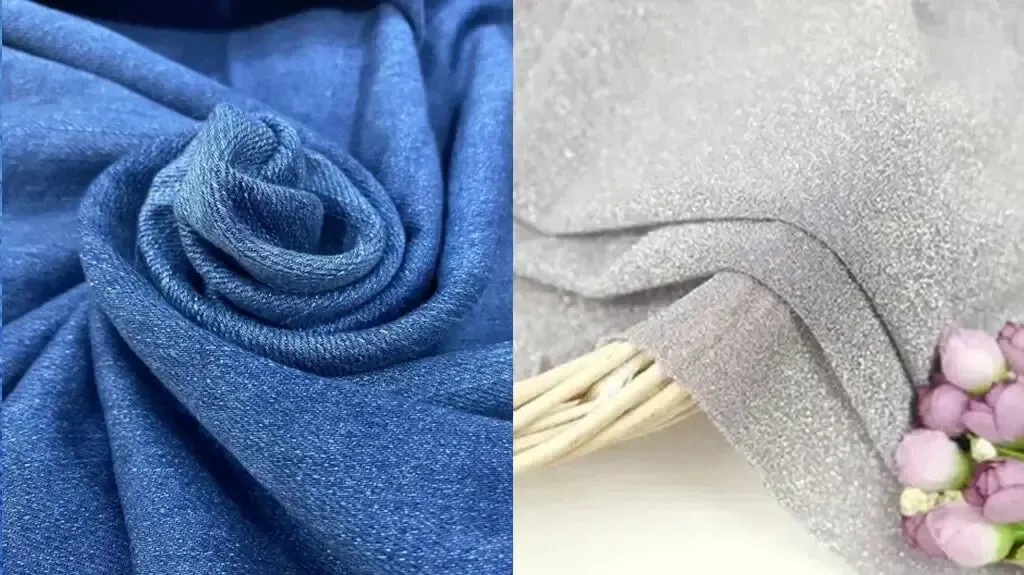
Softest plush fabrics excel in baby toys, comfort dolls, and high-end collectibles where tactile experience is paramount. For everyday plush or outdoor toys, durability often takes precedence over extreme softness.
Choosing the right plush fabric based on application ensures toys meet both customer expectations and functional demands.
- Baby toys: Require hypoallergenic, ultra-soft fabrics.
- Comfort dolls: Benefit from silky, luxurious plush.
- Collectors’ items: Use high-end velvet or microfiber for visual and tactile appeal.
- Play toys: Need durable velboa or similar fabrics.
| Application | Softness Priority | Durability Priority | Recommended Fabrics |
|---|---|---|---|
| Baby toys | Very high | Moderate | Minky, Microfiber |
| Comfort dolls | High | Moderate | Velvet, Minky |
| Collectibles | High | Low | Velvet, Microfiber |
| Play toys | Moderate | High | Velboa, Velour |
Tailoring fabric choice enhances product success.
Conclusion
The softest plush fabric results from fiber choice, pile length, and expert finishing. Balancing softness with durability ensures premium, long-lasting stuffed animals.
For expert guidance on plush fabric sourcing and plush toy manufacturing, contact [email protected] or visit Kinwin Plush Toys.




